Discover 35 hidden attractions, cool sights, and unusual things to do in Kingston upon Hull (United Kingdom). Don't miss out on these must-see attractions: Hull and East Riding Museum, Streetlife Museum of Transport, and The Deep Aquarium. Also, be sure to include Queen Victoria Square in your itinerary.
Below, you can find the list of the most amazing places you should visit in Kingston upon Hull (England).
Table of Contents
Hull and East Riding Museum
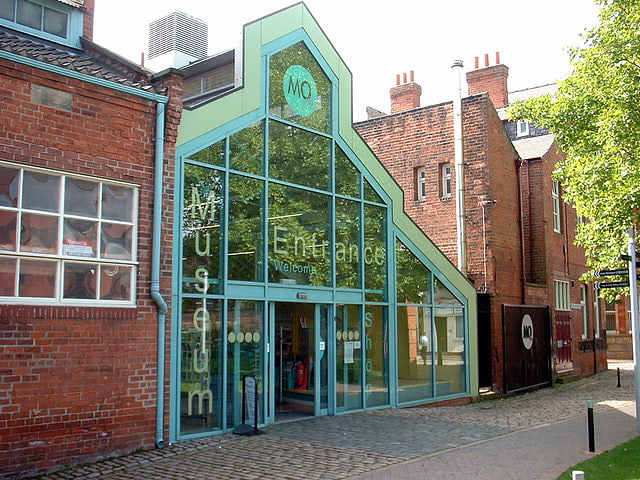
Museum. The Hull and East Riding Museum is located in the Museums Quarter of the Old Town in Kingston upon Hull, England. It dates back to 1925 as the Museum of Commerce and Industry in a former Customs House but acquired its present name in 1989 with a major refurbishment and new entrance, with the transport section moving to a separate museum. It displays items from prehistoric to medieval in the area, many of them in life-size tableaux or reconstructions of rooms and buildings.[1]
Streetlife Museum of Transport
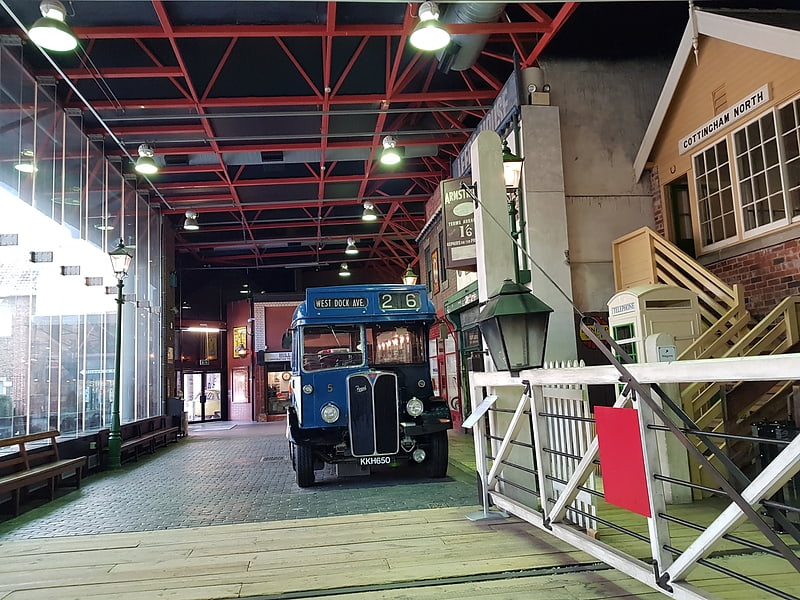
Museum in Hull, England. The Streetlife Museum of Transport is a transport museum located in Kingston upon Hull, England. The roots of the collection date back to the early 20th century, however the purpose-built museum the collection is housed in was opened in 1989 by the then Hull East MP, John Prescott. Core areas of the collection include Veteran cars, horse-drawn carriages and objects relating to local public transport.
The museum forms part of the Museums Quarter in Hull, based on the historic High Street in the Old Town of the city. The Museums Quarter comprises the Streetlife Museum, the Hull and East Riding Museum (archaeology), the Arctic Corsair trawler and Wilberforce House Museum. The site is managed by Hull Museums, a department of Hull City Council on behalf of the people of the city.[2]
Address: High St, HU1 1PS Hull (Riverside)
The Deep Aquarium
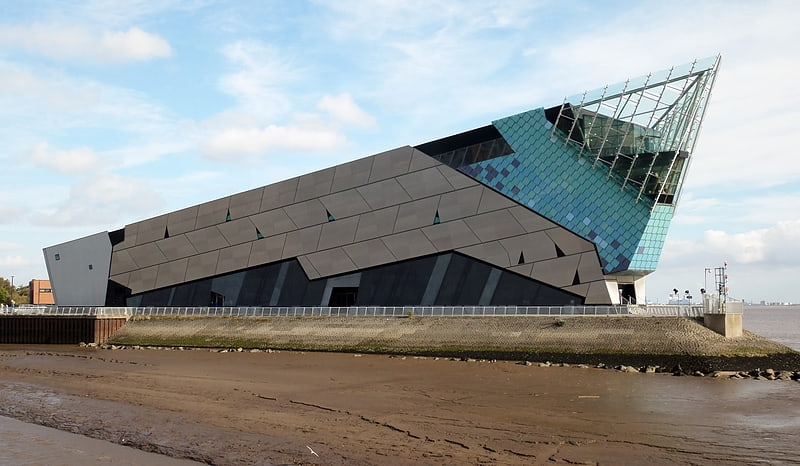
Aquarium and sealife centre. The Deep is a public aquarium situated at Sammy's Point, at the confluence of the River Hull and the Humber Estuary in Hull, England. It opened in March 2002.
Billed as "the world's only submarium", the exhibits contain thousands of sea creatures (including seven species of shark), 2,500,000 litres (550,000 imp gal; 660,000 US gal) of water and 87 tonnes (96 short tons; 86 long tons) of salt housed in a building designed by Sir Terry Farrell and built as part of the UK National Lottery's Millennium Commission project.
The Deep is also a landmark centre for marine research. A team of aquarists look after the animals in The Deep's collection as well as carrying out research into the marine environment. In 2013, the aquarium was voted the best family place to visit in Hull.
The Deep is a charitable public aquarium dedicated to increasing people's enjoyment and understanding of the world's oceans.[3]
Address: Tower St, HU1 4DP Hull (Riverside)
Queen Victoria Square

Tourist attraction in Hull, England. Queen Victoria Square is a public square located in the centre of Kingston upon Hull, England. The square is dedicated to Queen Victoria, and contains numerous buildings including Hull City Hall, the Maritime Museum and Ferens Art Gallery. A statue of Queen Victoria, designed in 1903 by J. S. Gibson also stands in the square, and is listed Grade II.[4]
Humber Bridge
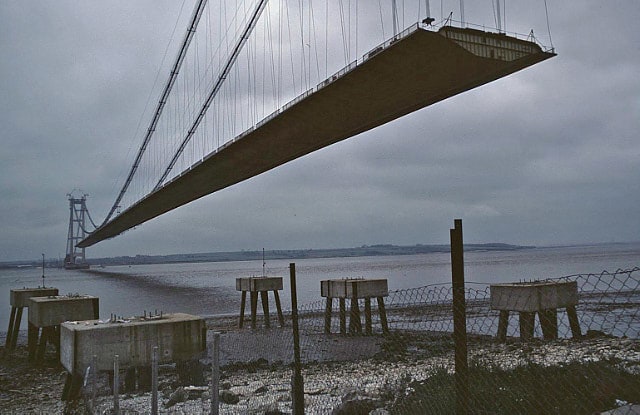
Massive suspension bridge over estuary. The Humber Bridge, near Kingston upon Hull, East Riding of Yorkshire, England, is a 2.22 km single-span road suspension bridge, which opened to traffic on 24 June 1981. When it opened, the bridge was the longest of its type in the world; it was not surpassed until 1998, with the completion of the Akashi Kaikyō Bridge, and is now the twelfth-longest.
The bridge spans the Humber (an estuary formed by the rivers Trent and Ouse), between Barton-upon-Humber on the south bank and Hessle on the north bank, connecting the East Riding of Yorkshire with North Lincolnshire. Both sides of the bridge were in the non-metropolitan county of Humberside until its dissolution in 1996. The bridge can be seen for miles around and from as far as Patrington in the East Riding of Yorkshire and out to sea miles off the coast. It is a Grade I listed building.
By 2006, the bridge carried an average of 120,000 vehicles per week. The toll was £3.00 each way for cars (higher for commercial vehicles), which made it the most expensive toll crossing in the United Kingdom. In April 2012, the toll was halved to £1.50 each way after the UK government deferred £150 million from the bridge's outstanding debt.[5]
Hull Maritime Museum
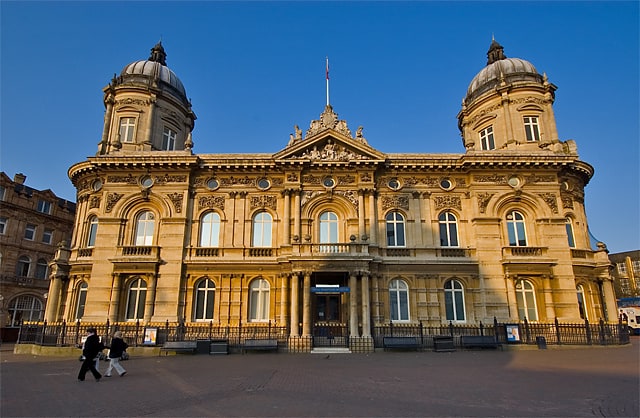
Museum in Hull, England. The Hull Maritime Museum is a museum in Kingston upon Hull, England, that explores the seafaring heritage of the city and its environs. The museum's stated mission is "To preserve and make available the maritime history of Hull and east Yorkshire through artefacts and documents".[6]
Address: Queen Victoria Square, HU1 3DX Hull (Riverside)
Fort Paull
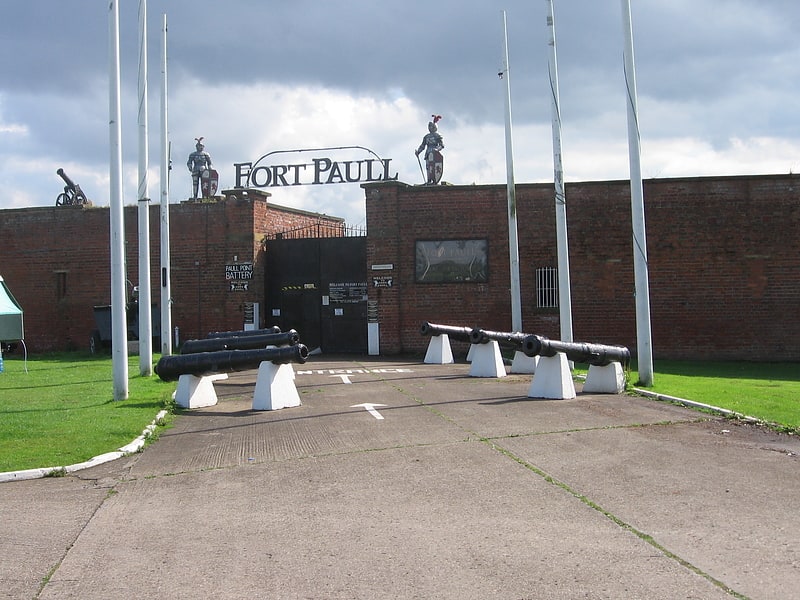
Museum in Paull, England. Fort Paull was a gun battery situated on the north bank of the Humber, near the village of Paull, downstream from Hull in northern England.[7]
Address: Battery Road, HU12 8FP Kingston upon Hull
Ferens Art Gallery
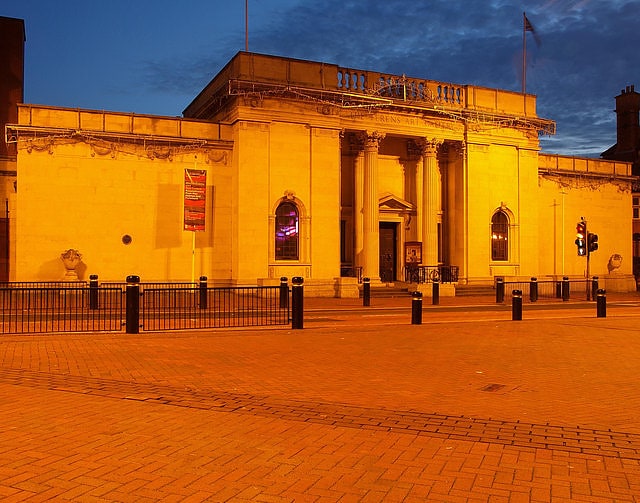
Art gallery in Hull, England. The Ferens Art Gallery is an art gallery in the English city of Kingston upon Hull. The site and money for the gallery were donated to the city by Thomas Ferens, after whom it is named. The architects were S. N. Cooke and E. C. Davies. Opened in 1927, it was restored and extended in 1991. The gallery features an extensive array of both permanent collections and roving exhibitions. Among the exhibits is a portrait of an unknown woman by Frans Hals. The building also houses a children's gallery and a popular cafe. The building is now a Grade II listed building.
In 2009, an exhibition and live performance took place at the venue, to help celebrate the 25th anniversary of the opening of The New Adelphi Club, a live music venue less than 2 miles (3 km) north.
In 2013, the gallery acquired a fourteenth-century painting by Pietro Lorenzetti, depicting Christ Between Saints Paul and Peter. The acquisition was jointly funded by the Ferens Endowment Fund, the Heritage Lottery Fund and Art Fund.
In May 2015, it was announced that the gallery would get a £4.5 million makeover to enable it to host the Turner Prize in 2017 as part of the UK City of Culture programme. The gallery reopened on 13 January 2017. On 8 February 2017, Charles, Prince of Wales and Camilla, Duchess of Cornwall visited the gallery to view the completed refurbishment.
In January 2018, Hull City Council announced that a record 519,000 visits were made to the gallery during 2017.[8]
Address: Carr Ln, HU1 3RA Hull (Riverside)
Queen's Gardens
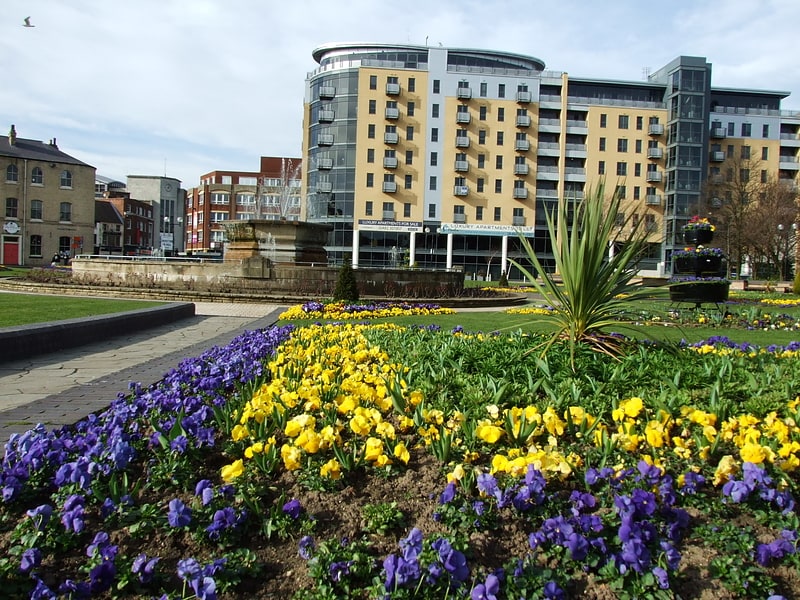
Park in Hull, England. Queen's Gardens is a sequence of gardens in the centre of Kingston upon Hull, England. They are set out within a 9.75-acre area that until 1930 was filled with the waters of Queen's Dock. As the dock was not fully filled in, the gardens are largely below the level of the surrounding streets.[9]
Address: Guildhall Rd, Kingston upon Hull (Riverside)
Burton Constable Hall
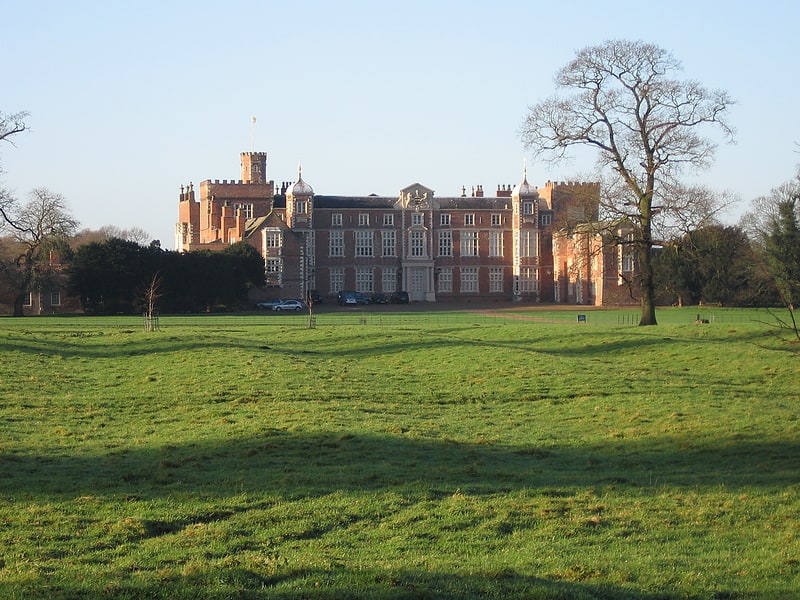
Building in England. Burton Constable Hall is a large Elizabethan country house in England, with 18th- and 19th-century interiors and a fine 18th-century cabinet of curiosities. The hall, a Grade I listed building, is set in a park designed by Capability Brown with an area of 300 acres. It is located 3 miles south-east of the village of Skirlaugh in the East Riding of Yorkshire, approximately 9 miles north-east of the city of Hull, and has been the home of the Constable family for over 400 years.
The hall and park are owned by the Burton Constable Foundation, a registered charity.[10]
Hull Truck Theatre
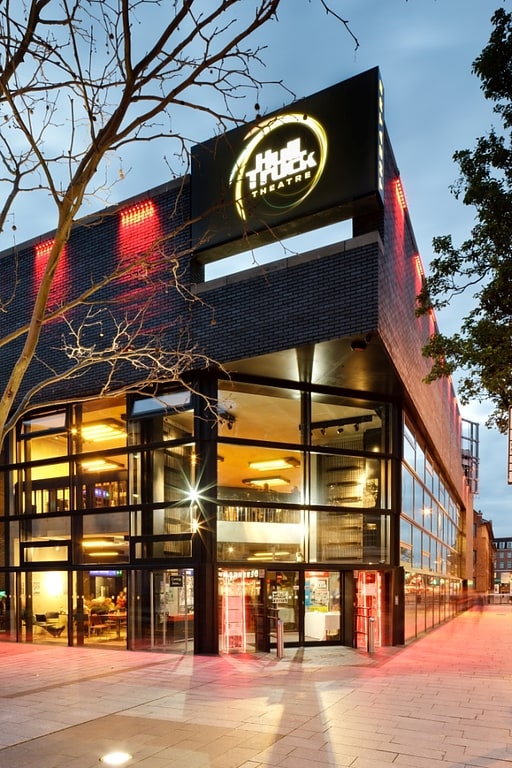
Theatre in Hull, England. Hull Truck Theatre is a theatre in Kingston upon Hull, England, which presents drama productions, and also tours. In March 2022, the theatre's original premises on Coltman Street, Hull, was recognised by a blue plaque to coincide with the theatre's 50-year anniversary.[11]
Address: Kingston upon Hull, 50 Ferensway, Hull, HU2 8LB
Wilberforce House

Museum in Hull, England. Wilberforce House is a British historic house museum, part of the Museums Quarter of Kingston-upon-Hull. It is the birthplace of social reformer William Wilberforce, who used his time as a member of Parliament to work for the abolition of slavery throughout the British Empire. Like the nearby Blaydes House and Maister House, also on the High Street, the Grade I listed building was formerly a merchant's house with access to quayside on the River Hull.
The house is now a museum showcasing the life and work of one of Hull's most famous sons. The museum re-opened on 25 March 2007, after a two-year £1.6 million redevelopment, in time for the 200th anniversary of Wilberforce's Act of Parliament abolishing the slave trade in the British Empire.The exhibition has a broad focus on the history of slavery in addition to items relating to the life and work of Wilberforce.
The front garden, named after Nelson Mandela,contains a statue of Wilberforce which underwent a £10,000 restoration in 2011. The statue was designated a Grade II* in 1994 and is now recorded in the National Heritage List for England, maintained by Historic England. Adjoining the site is Oriel Chambers, the home of the University of Hull's Wilberforce Institute for the Study of Slavery and Emancipation which conducts research into historic and contemporary forms of slavery.
The house also exhibits the East Yorkshire regimental collection.[12]
Address: 23-25 High St, HU1 1NQ Hull (Riverside)
Humber Street Gallery
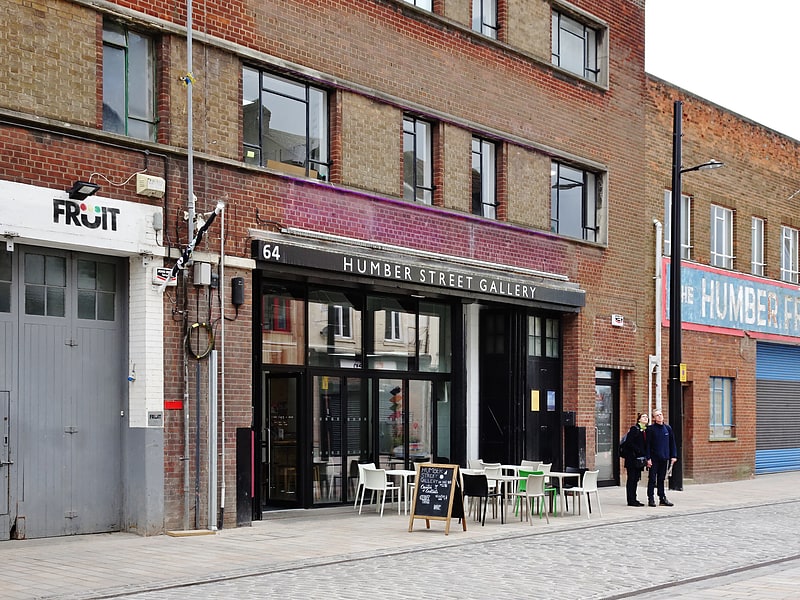
Art gallery in Hull, England. The Humber Street Gallery is an art gallery in the English city of Kingston upon Hull. The three-storey gallery was opened in February 2017 as part of that year's Hull UK City of Culture event, with exhibitions by the COUM Transmissions collective and Sarah Lucas. Curator David Sinclair describes the gallery as being "the new home of the sort of art that Hull inspires".
The gallery's cafe includes the local "Dead Bod" graffiti, relocated from its original site on a corrugated iron shed on Riverside Wharf. The artwork is a human-sized depiction of a dead bird, supposedly painted by Captain Len ‘Pongo’ Rood and Chief Engineer Gordon Mason in the 1960s, and was a prominent feature on the city's docks.
The Humber Street Gallery is located in a former fruit and vegetable warehouse in Hull's Fruit Market district.[13]
Address: 18 Humber St, HU1 1TH Hull (Riverside)
Hull Minster

Anglican church in Hull, England. Hull Minster is an Anglican minster in the centre of Kingston upon Hull, East Riding of Yorkshire, England. The church was called Holy Trinity Church until 13 May 2017 when it became Hull Minster.[14]
Address: S Church Side, HU1 2JJ Kingston upon Hull (Riverside)
Hull City Hall
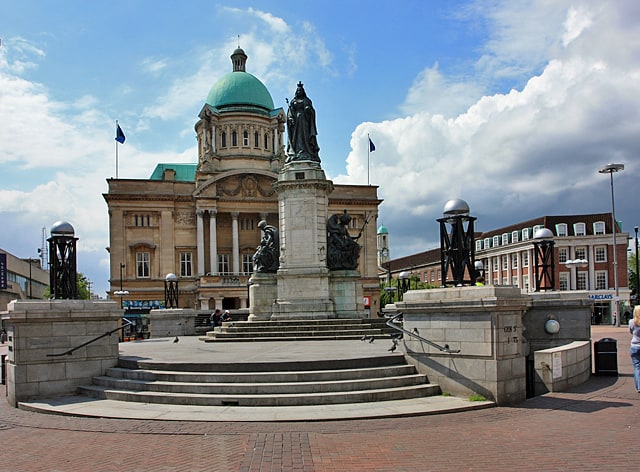
Building in Hull, England. Hull City Hall is a civic building located in Kingston upon Hull, East Riding of Yorkshire, England. Located in Queen Victoria Square in the city centre, it is a Grade II* listed building.[15]
Address: 67 Carr Lane, Kingston upon Hull (Riverside)
The New Adelphi Club
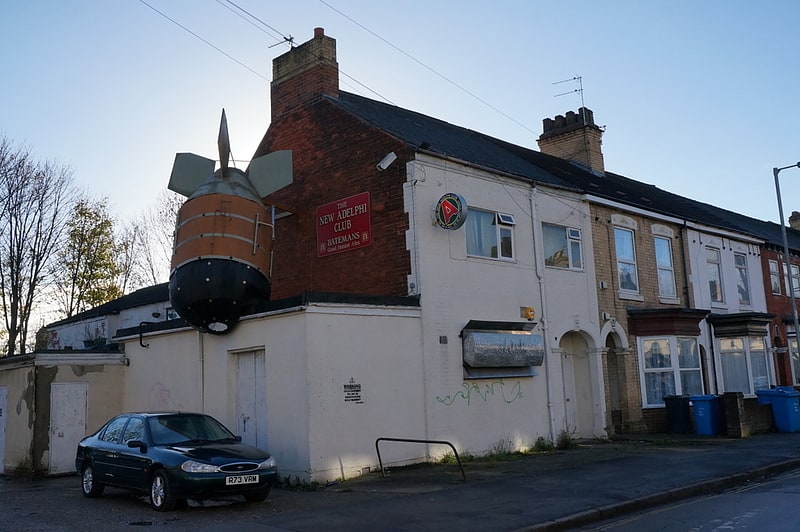
Club in Hull, England. The New Adelphi Club is a popular local venue for alternative live music in the city of Hull, East Riding of Yorkshire, England. It has achieved notability outside its local area, having hosted such bands as The Stone Roses, Radiohead, Green Day and Oasis, in its over-30 year history. The club opened in October 1984, and Kaiser Chiefs performed there as part of the 30th anniversary celebrations in 2014.[16]
Address: Kingston upon Hull, 89 De Grey Street
East Park
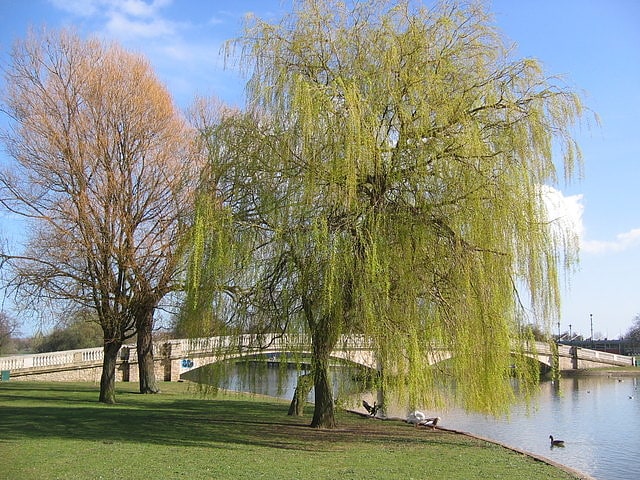
Park in Hull, England. East Park is a major park of about 120 acres situated on the Holderness Road in Hull, East Riding of Yorkshire, England. East Park is registered a Grade II listed site by English Heritage. It is the largest public park in Hull and is often used for large open-air venues such as concerts and the annual Hull Show.[17]
Address: East Park Avenue, HU8 8JU Kingston upon Hull (Park)
Spurn Lightship
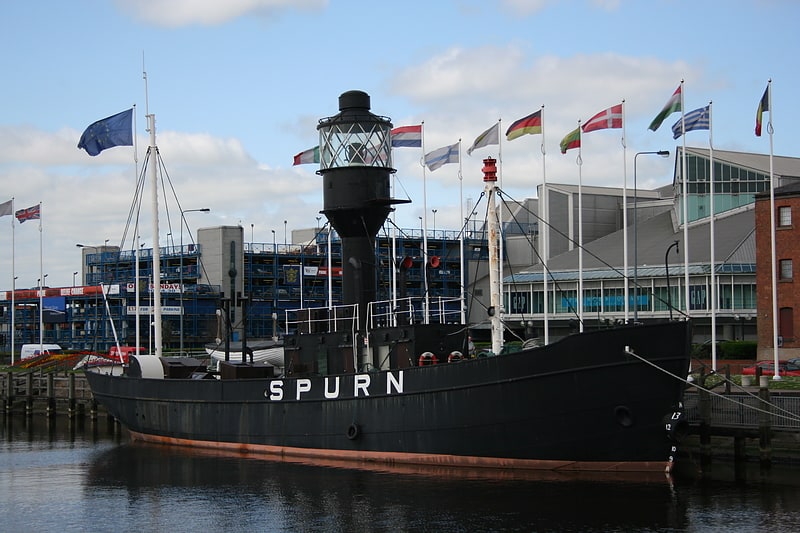
Museum in Hull, England. The Spurn Lightship is a lightvessel, previously anchored in Hull Marina in the British city of Kingston upon Hull, England. It was relocated to a shipyard in October 2021 for restoration, prior to becoming a display together with the Arctic Corsair.
The ship was built in 1927 and served for 48 years as a navigation aid in the approaches of the Humber Estuary, where it was stationed 4+1⁄2 miles (7.2 km) east of Spurn Point. On 15 April 1959, the lightship was driven ashore in the River Hull at Woodmansey, Yorkshire.
The lightship was decommissioned in 1975 and bought/restored by Hull City Council in 1983 before being moved to Hull Marina as a museum in 1987. The museum closed in June 2018, in preparation for the vessel being relocated in September, to facilitate a footbridge being constructed over the adjacent A63. Initially it was expected that the museum would reopen in 2021 after undergoing conservation work and a relocation to a new position on the marina.[18]
Address: Hull Marina, HU1 Hull (Riverside)
Arctic Corsair
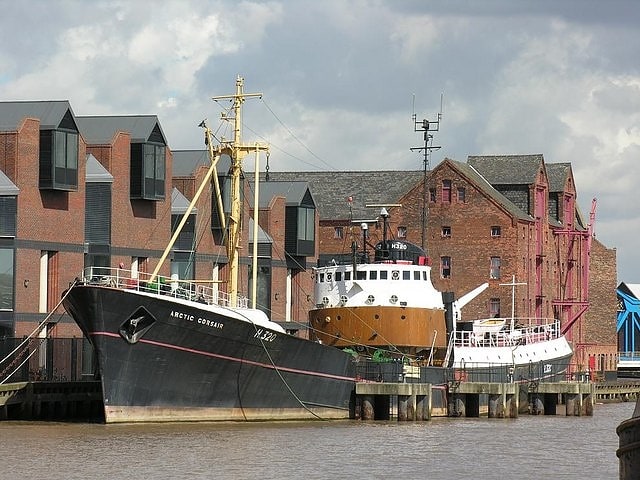
Trawler. The Arctic Corsair is a deep-sea trawler, built in 1960, that was converted to a museum ship in 1999. She is temporarily berthed at Alexandra Dock in Kingston upon Hull, England, pending completion of a new permanent location in the city's Museums Quarter. Exhibits and guides aboard the boat tell the story of Hull's deep-sea fishing industry.[19]
Address: High St, HU1 1PS Hull (Riverside)
Pearson Park

Park in Hull, England. Pearson Park, originally known as the People's Park is a park in the west of Kingston upon Hull, England. It is situated about 1 mile north-west of the city centre of Hull with its main entrance on Beverley Road and its western boundary adjoining Princes Avenue.
The park was established in 1862 through the gift of land by Zachariah Pearson, and was the first public park in the city.[20]
Address: Pearson Park, HU5 2TQ Hull (Wyke)
Albert Hall Music Hall
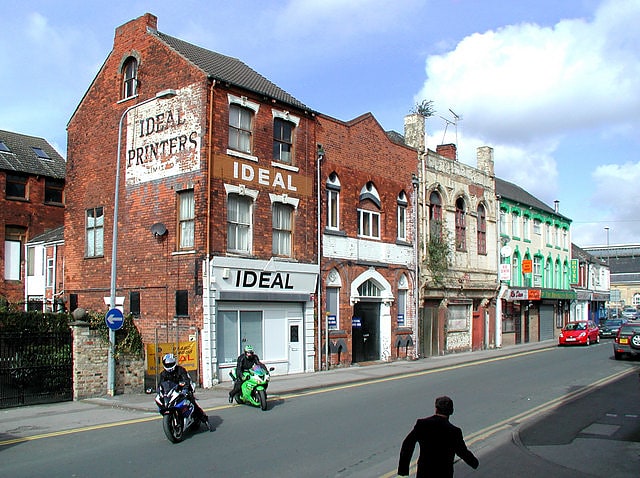
The Albert Hall Music Hall on 10 Midland Street was one of the first music halls built in Kingston upon Hull, England. The building is believed to have been built following the creation of Midland Street, and officially opened for the first time in 1874. It was turned into a saloon bar and pub in the early 20th century, before its final transformation into a bingo hall in the 1970s.
In 2015, the Hull City Council served a Section 215 notice on the building's private owners, ordering them to repair and restore it by the end of the month or pay the bill for its subsequent demolition. The building was considered to be in a potentially dangerous condition after a survey was carried out following a fire in May 2015 at a neighbouring building. It was partially demolished in June 2015. The building is currently owned by Tawazun London Limited.[21]
The Guildhall
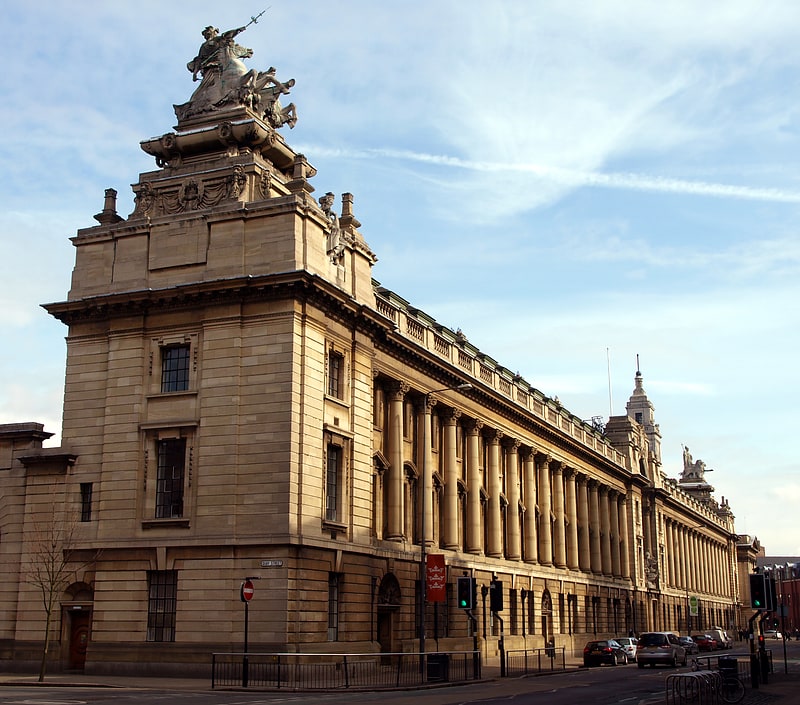
The Guildhall is a building on Alfred Gelder Street in the City of Kingston upon Hull, East Riding of Yorkshire, England. The building is currently the headquarters of Hull City Council but is also used as a venue for conferences, civic receptions and formal dinners. It is a Grade II* listed building status.[22]
Address: Alfred Gelder Street, HU1 2AA Hull (Riverside)
Cottingham
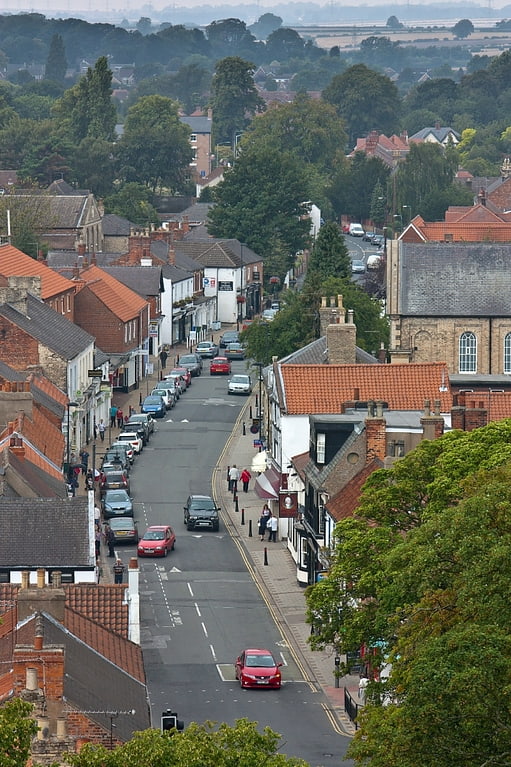
Village in England. Cottingham is a large village and civil parish in the East Riding of Yorkshire, England with average affluence. It lies 3+1⁄2 miles north-west of the centre of Kingston upon Hull, and 6.2 miles south-east of Beverley on the eastern edge of the Yorkshire Wolds. It has two main shopping streets, Hallgate and King Street, which cross each other near the Church of Saint Mary the Virgin, and a market square called Market Green. Cottingham had a population of 17,164 residents in 2011 making it larger by area and population than many towns. However, it is one of the villages claiming to be the largest village in England.[23]
Hull History Centre
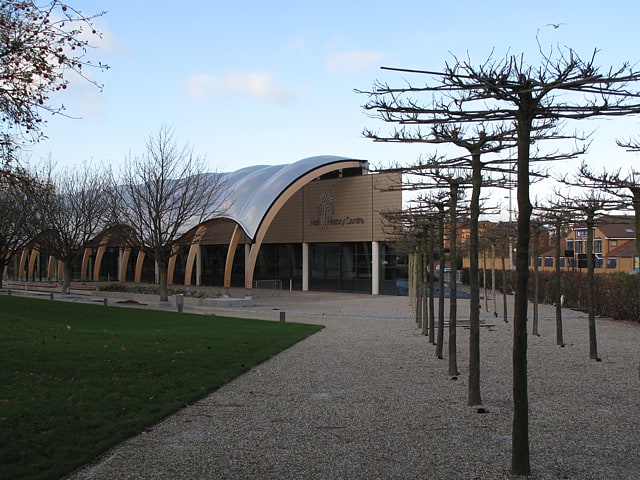
Archive in Hull, England. The Hull History Centre is an archive and local studies library in Hull, England, that houses the combined collections of both the Hull City Council and Hull University archives and local studies resources. This collaboration between Hull City Council, Hull University, and the Heritage Lottery Fund made Hull the first city in the UK to unite local council and university collections under one roof.[24]
Address: History Centre Worship Street, HU2 8BG Kingston upon Hull (Riverside)
Hull New Theatre
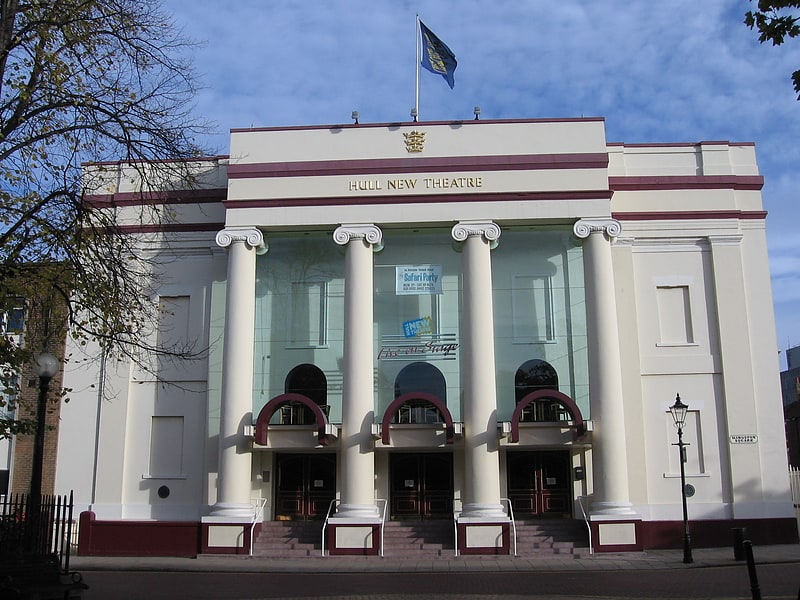
Theatre in Hull, England. The Hull New Theatre is a theatre in Kingston upon Hull, East Riding of Yorkshire, England. It opened in 1939 as a successor to the Hull Repertory Theatre Company. The Hull New Theatre features musicals, opera, ballet, drama, children's shows and one-night performances, with a highlight of the year being the annual Christmas pantomime.
The Hull New Theatre is now a Grade II listed building.
The theatre closed on 4 January 2016, after the December 2015 pantomime season, for a major refit in preparation of Hull being the UK City of Culture in 2017. Though £5 million of funding from the Arts Council was not granted Hull City Council intended to press ahead with the £11.7 million project. In the 2016 Budget George Osborne indicated that £13 million would be made available towards the City of Culture work in the city, which the council indicated would be used to cover the shortfall in funding for the theatre refurbishments. In March 2016 the Council announced a delay in the project and that reopening would not take place until summer 2017. In February 2017, it was announced that a one-off performance by The Royal Ballet on 16 September, would officially reopen the theatre. The theatre opened on 16 September 2017, with an increased capacity of 1,330, to a sell-out one-off performance by The Royal Ballet which was streamed live to Queen's Gardens to an additional audience of around 5,000.[25]
Address: Kingston upon Hull, Kingston Square
Pickering Park

Pickering Park is a park in the western suburbs of Kingston upon Hull, on the north side of Hessle Road, near Anlaby, East Riding of Yorkshire, England.[26]
Address: Pickering rd, Kingston upon Hull (West Kingston)
River Hull tidal surge barrier
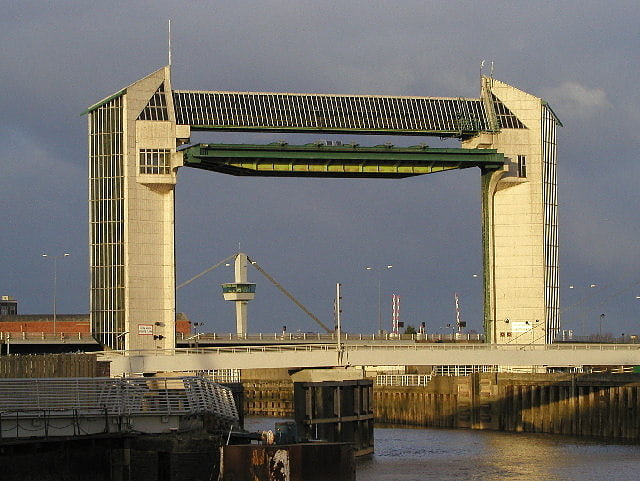
The River Hull tidal surge barrier is a flood control gate located on the River Hull in the city of Kingston upon Hull, in the East Riding of Yorkshire, England. The barrier impounds the river in times of tidal surges, preventing water moving upstream of the river from the Humber Estuary, and flooding the areas of the city which are near to the river, or susceptible to flooding. It is held horizontal when not in use, and turns 90 degrees before being lowered to the riverbed in the event of a tidal surge. It is the second largest flood barrier in the United Kingdom after the Thames Barrier in London.
The barrier was opened in 1980, and since then, has closed over 30 times as a preventative measure during tidal surges. A proposed lagoon to control tidal flooding in the Humber Estuary would render the River Hull non-tidal. The barrier was grade II listed in 2017, with David Neave describing it as a prominent Hull landmark.[27]
Barrow Haven Reedbed

Nature reserve. Barrow Haven Reedbeds is a local nature reserve with an area of over 12.7 ha located in Barrow-upon-Humber, North Lincolnshire, England.
It is one of the most important of the flooded former clay pits on the Humber bank: Over 150 species of birds have been recorded from the site.[28]
St Charles Borromeo
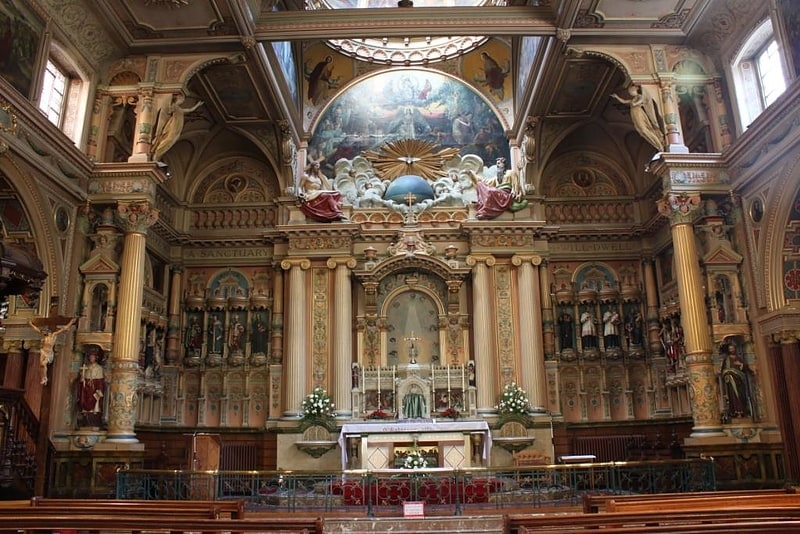
Catholic church in Hull, England. St Charles Borromeo is a parish in the Roman Catholic Diocese of Middlesbrough and is the oldest post-reformation Catholic Church in the city of Kingston upon Hull, England. The church is a Grade I listed building, having been upgraded from a Grade II* in March 2016.[29]
Address: 12 Jarratt St, HU1 3HB Hull (Riverside)
Hull Marina
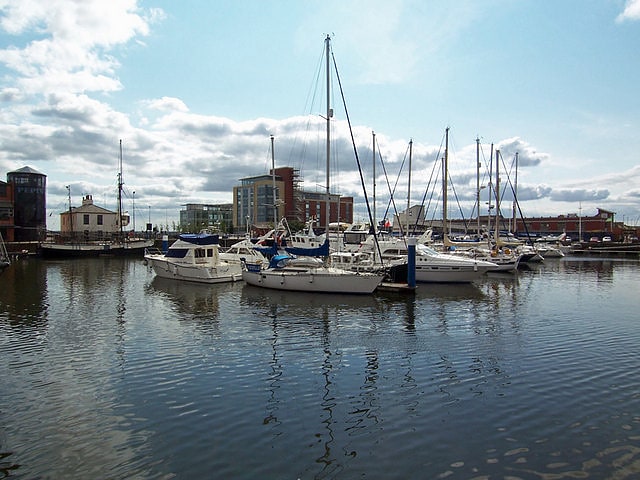
Hull Marina is a marina for pleasure boats situated in the English city of Kingston upon Hull. It was opened in 1983 on the site of the former Railway Dock and Humber Dock and is managed by British Waterways Marinas Limited.
The marina is home to 270 berths, spread across Humber Dock and Railway Dock, as well as a boat yard serviced by a 50-tonne boat hoist. Access through the lock to the River Humber is possible at high water ±3 hours. The basin outside the lock has a "waiting wall" for vessels to tie up to while waiting to enter the lock, although this dries out at low water.
Railway Dock and Humber Dock are separated by a lifting pedestrian bridge, which is lifted to allow access for watercraft.[30]
St Mary's Church
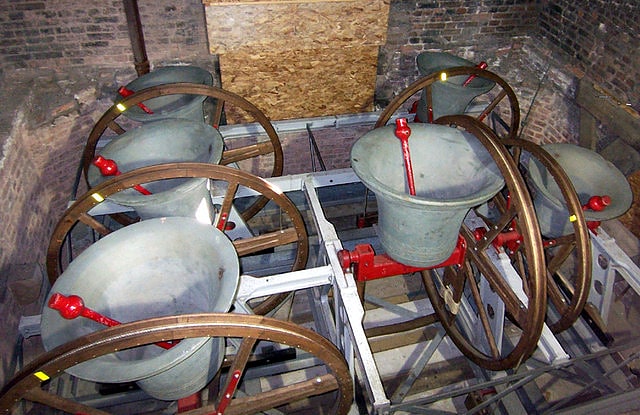
Building. The Church of St Mary, also known as Lowgate St Mary, is a Church of England parish church in Kingston upon Hull, East Riding of Yorkshire. The church is a grade II* listed building.[31]
Port of Hull
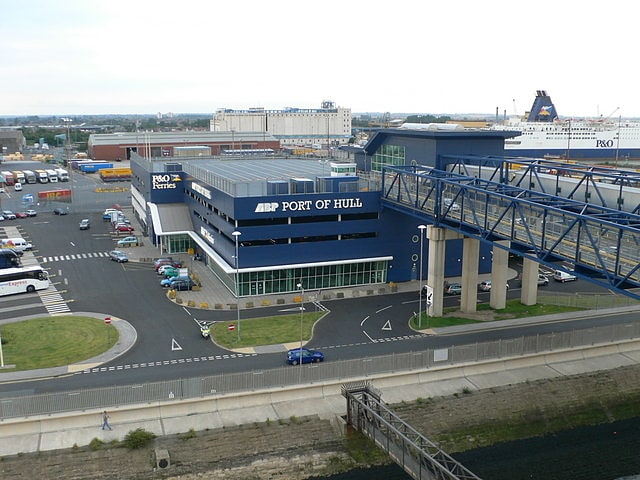
The Port of Hull is a port at the confluence of the River Hull and the Humber Estuary in Kingston upon Hull, in the East Riding of Yorkshire, England.
Seaborne trade at the port can be traced to at least the 13th century, originally conducted mainly at the outfall of the River Hull, known as The Haven, or later as the Old Harbour. In 1773, the Hull Dock Company was formed and Hull's first dock built on land formerly occupied by Hull town walls. In the next half century a ring of docks was built around the Old Town on the site of the former fortifications, known as the Town Docks. The first was The Dock (1778), (or The Old Dock, known as Queen's Dock after 1855), followed by Humber Dock (1809) and Junction Dock (1829). An extension, Railway Dock (1846), was opened to serve the newly built Hull and Selby Railway.
The first dock east of the river, Victoria Dock, opened in 1850. Docks along the banks of the Humber to the west were begun in 1862 with the construction of the West Dock, later Albert Dock. The William Wright extension opened in 1880, and a dock further west, St Andrew's Dock, opened in 1883. In 1885, Alexandra Dock, a new eastern dock was built connected to a new railway line constructed by the same company, the Hull Barnsley & West Riding Junction Railway and Dock Company. In 1914, King George Dock was built jointly by the competing railway companies, the Hull and Barnsley company and the North Eastern Railway; this was extended in 1969 by the Queen Elizabeth Dock extension. As of 2016 Alexandra is being modernised for use in wind farm construction, with a factory and estuary side quay under construction, a development known as Green Port Hull.
The Town Docks, Victoria Dock, and St Andrew's Dock fell out of use by the 1970s and were closed. Some were later infilled and redeveloped, with the Humber and Railway docks converted for leisure craft as Hull Marina.
Other facilities at the port included the Riverside Quay, built on the Humber banks at Albert Dock for passenger ferries and European trains, and the Corporation Pier, from which a Humber Ferry sailed to New Holland, Lincolnshire. Numerous industrial works were served by the River Hull, which also hosted several dry docks. To the east of Hull, Salt End near Hedon became a petroleum distribution point in the 20th century, with piers into the estuary for shipment, and later developed as a chemical works.
As of 2020, the main port is operated by Associated British Ports and is estimated to handle one million passengers per year; it is the main softwood timber importation port for the UK.[32]
The Avenues

The Avenues is an area of high status Victorian housing located in the north-west of Kingston upon Hull, England. It is formed by four main tree-lined straight avenues running west off the north-north-east/south-south-west running Princes Avenue.
The Avenues area, originally built as middle class housing in the late 19th century, has remained a popular residential area; its popularity with left wing intellectuals and academics, and varied leafy cosmopolitan ambience has caused it to be stereotyped as Hull's 'Muesli Belt'. To the adjoining south of the Avenues is an area of roughly contemporary Victorian terraces, with streets named after the seats of nobles; it is sometimes referred to as the Dukeries.
Whilst primarily housing, the area hosted the Industrial School for Girls from 1888 to 1919 on Park Avenue, the building afterwards used for other educational purposes, now known as the Avenues Centre. Marlborough Avenue is the location of Froebel House Preparatory School.
Princes Avenue was a popular urban shopping street during the 20th century. In the 21st century it has remained commercial with increasing numbers of specialist shops, restaurants and other food outlets.[33]
Hull Trinity House
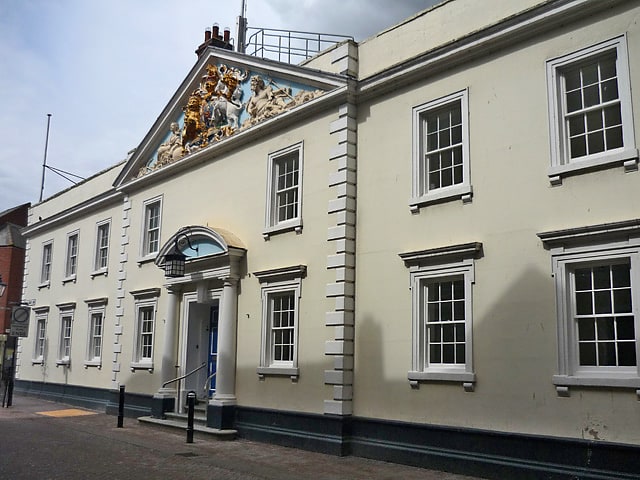
The Hull Trinity House, locally known as Trinity House, is a seafaring organisation consisting of a charity for seafarers, a school, and a guild of mariners. The guild originated as a religious guild providing support and almshouses for the needy, and established a school for mariners in 1787. By the 18th century it had responsibilities including management of the harbour at Hull, and buoys and pilotage in the Humber Estuary.
After the loss of many of its responsibilities as a result of the Humber Conservancy Act of 1852, the guild continued its work as a charity, and the provision of education, which continues to the present day.
The school, now known as Hull Trinity House Academy, is now a secondary boys' school.
The charity, Hull Trinity House Charity, supports seafarers and their families; supported by property holdings, it operates rest homes, as well as Welton Waters Adventure Centre.[34]
Fortifications of Kingston upon Hull
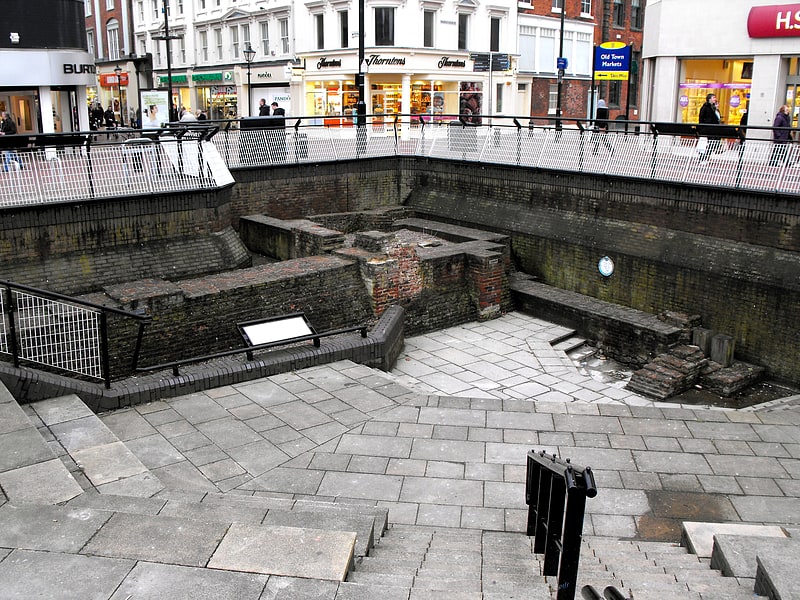
The fortifications of Kingston upon Hull consisted of three major constructions: the brick built Hull town walls, first established in the early 14th century, with four main gates, several posterngates, and up to thirty towers at its maximum extent; Hull Castle, on the east bank of the River Hull, protecting Hull's river harbour, constructed in the mid 16th century and consisting of two blockhouses and a castle connected by a curtain wall; and the later 17th century Citadel, an irregular triangular, bastioned, primitive star fort replacing the castle on the east river bank.
The town walls were demolished and replaced with the town docks over approximately 50 years from the 1770s, the Citadel was demolished and the site turned over to shipbuilding and dock activities in the 1860s.[35]